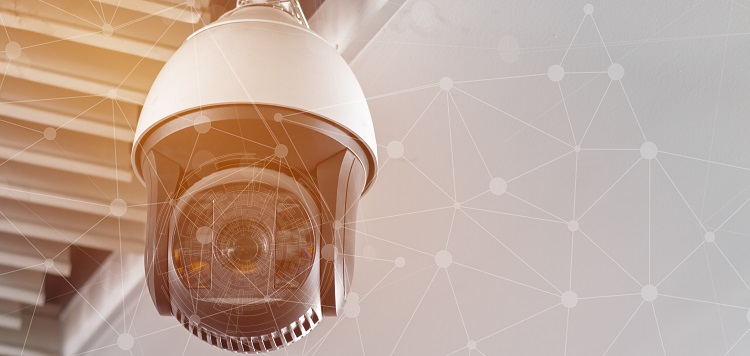The rise of electronic surveillance and algorithmic management in the workplace has led to growing concerns over worker privacy and autonomy. This has prompted advocacy groups to call for the establishment of a workplace standard to protect workers’ physical and mental health. The Occupational Safety and Health Administration (OSHA) has the authority to do so, as it already regulates hazards to workers’ physical safety and mental health. In response, a group of 21 advocacy groups has sent a letter to the Biden administration outlining their proposals for the OSHA standard. In this article, we will explore the proposal and the subject of worker surveillance.
OSHA’s Authority
OSHA has the authority to regulate workplace monitoring because it falls under the mandate of workplace safety and health regulations. The existing regulations on hazards to workers’ physical safety and mental health already cover issues such as exposure to toxic substances, ergonomic hazards, and workplace violence. Similarly, workplace monitoring can have a significant impact on workers’ well-being, and therefore, OSHA has the authority to establish standards for it.
Proposal Letter to the Biden Administration
A group of advocacy organizations has sent a letter to the Biden administration outlining its proposals for the OSHA standard. The letter calls for an update to OSHA’s existing guidance on injury prevention to include monitoring as a potential hazard to workers’ physical and mental health. This would require employers to take precautions to ensure that any monitoring they do is not excessive and does not harm workers’ health or well-being. The letter also recommends that the National Institute for Occupational Safety and Health (NIOSH) fund research on how employee surveillance affects workers’ physical and mental health.
The proposal to update workplace injury prevention guidance to include monitoring is a significant step in recognizing the impact that surveillance and algorithmic management can have on workers’ health. By doing so, OSHA can provide guidance to employers on best practices for monitoring, how to mitigate harm, and how to ensure that monitoring does not violate workers’ rights. The guidance can also make it clear that excessive monitoring can be detrimental to workers’ physical and mental health and should therefore be avoided.
Funding research on how employee surveillance affects workers’ physical and mental health is crucial to understanding the impact of monitoring on workers. Existing research indicates that excessive monitoring can be detrimental to workers’ health, including decreased job satisfaction, increased stress, and turnover. However, more research is needed to fully understand the long-term effects of workplace monitoring as well as the best practices for reducing harm while using monitoring tools.
The Contention Over Worker Surveillance
With the rise of remote work setups, worker surveillance has become a point of contention between employees and employers. Employees are concerned about invasion of privacy and loss of autonomy, while employers argue that monitoring is necessary to ensure productivity and prevent security breaches. This tension has put a spotlight on the need for workplace standards for electronic surveillance and algorithmic management.
Increased Monitoring During the Pandemic
The COVID-19 pandemic has caused an increase in the use of various monitoring tools, including keystroke, webcam, desktop, and email monitoring. While some worker rights advocates have raised concerns about workers’ privacy and autonomy, employers have argued that the increased monitoring is necessary to ensure productivity in a remote work setup.
Negative Effects of Excessive Monitoring
Studies have shown that excessive monitoring can have negative effects on workers’ physical and mental health. Excessive monitoring has been linked to decreased job satisfaction and commitment to the organization, as well as increased stress and turnover. By establishing workplace standards for electronic surveillance and algorithmic management, OSHA can help ensure that monitoring is not excessive and does not harm workers’ health.
Perception of Surveillance Tools
There is a divergence in perception between managers and employees regarding the use of surveillance tools. While managers often believe that these tools can improve performance, employees may perceive them as invasive and more likely to harm than help their performance. Studies have shown that 68% of managers believe surveillance tools improve performance, while 72% of employees think they worsen performance or have no effect.
Examples of Monitoring in Corporations
JPMorgan Chase and Goldman Sachs are corporations that have reportedly been monitoring their workers’ presence in the office by tracking their access card swipes. This type of monitoring raises concerns about the violation of workers’ privacy and autonomy. Establishing a workplace standard for electronic surveillance and algorithmic management can help alleviate these concerns and ensure that workers’ rights are protected.
The call for a workplace standard for electronic surveillance and algorithmic management is an important step in protecting workers’ physical and mental health. Workers’ privacy and autonomy are essential components of a healthy and productive workplace, and electronic surveillance and algorithmic management can undermine these values. By establishing workplace standards, OSHA can help ensure that workers’ rights are protected while allowing for the use of monitoring tools when necessary.

